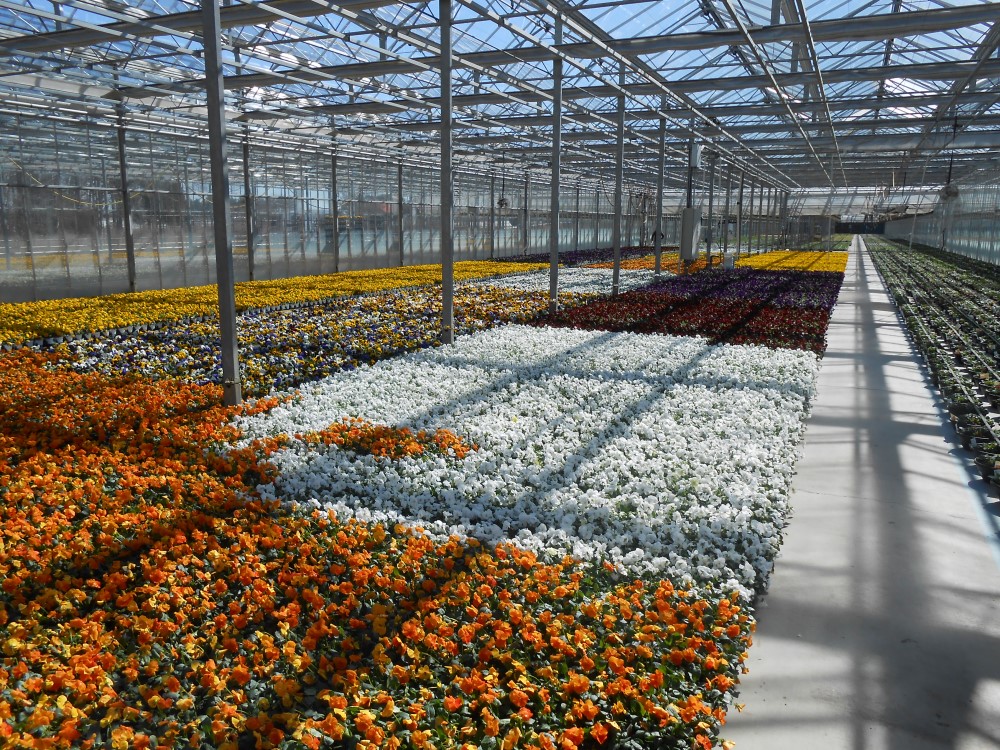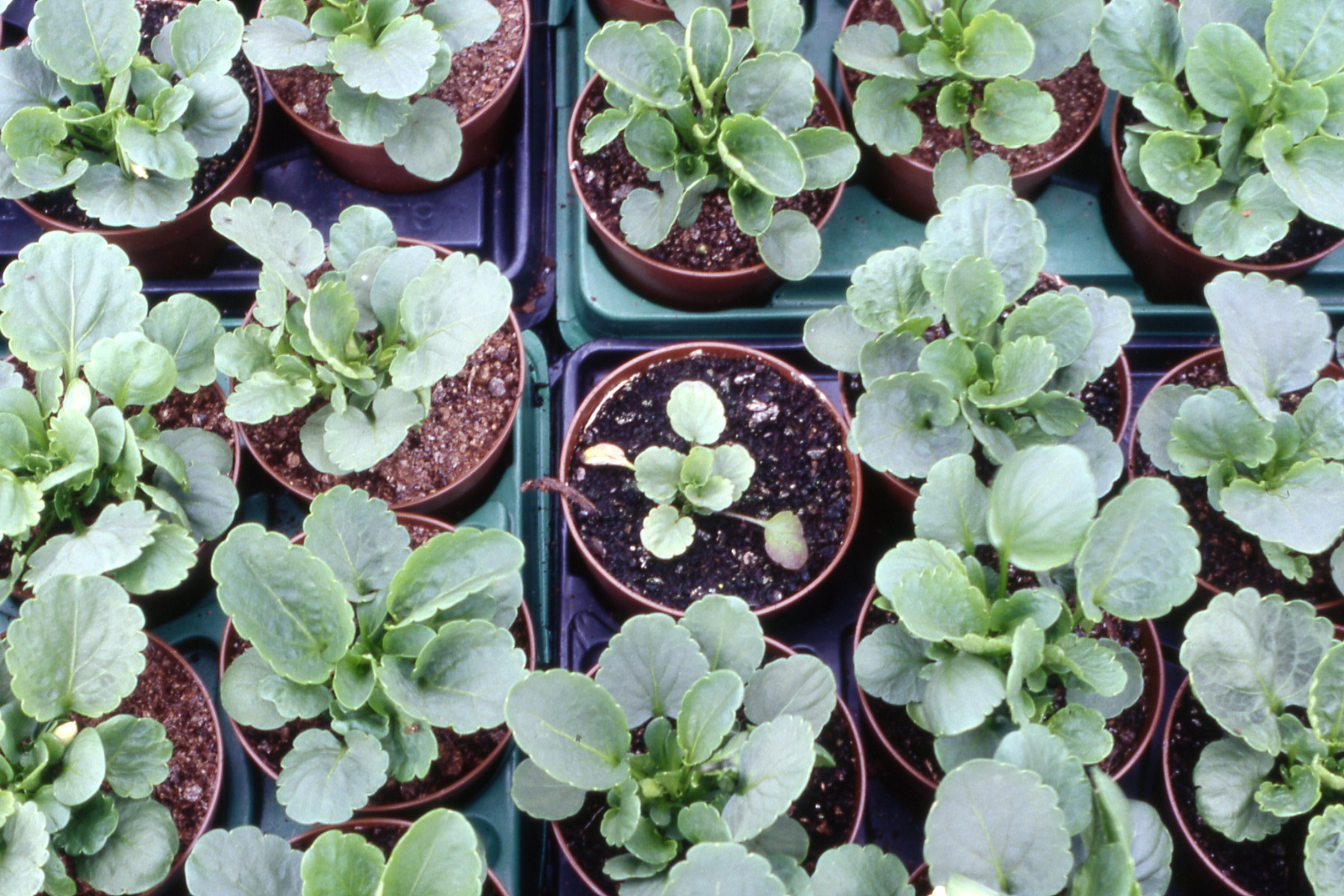Please click here to access the main AHDB website and other sectors.
- Home
- Knowledge library
- Guidelines on nursery hygiene for outdoor and protected ornamental crops
Guidelines on nursery hygiene for outdoor and protected ornamental crops
Preventing harmful pathogens, pests and weeds from entering a nursery, and minimising their spread, will reduce crop wastage and help keep associated labour and plant protection product costs down. These pages contain information on the key areas of good practice to maintain high standards of nursery hygiene.
Why is nursery hygiene important?
The purpose of good nursery hygiene is to preserve plant health. This is achieved through sanitation practices aimed at reducing populations of:
- Disease-causing organisms such as fungi, bacteria and viruses
- Pests such as insects, mites and nematodes
- Weed seeds
Where non-indigenous quarantine organisms occur, the objective is to eradicate them as quickly as possible. However, the aim generally is to reduce the problematic organisms to low enough levels that they pose minimal risk to crop production. Avoiding outbreaks can save large sums of money in terms of labour, plant protection products and their application, and crop losses. Maintaining a high level of nursery sanitation is especially important after an outbreak of a quarantine or other serious root or foliar disease or pest problem.
Examples of problems exacerbated by poor nursery hygiene include:
- Poinsettia root rot (Pythium species) where a mass of roots from previous crops has accumulated in the capillary matting and has not been adequately treated
- Geranium bacterial wilt (Xanthomonas campestris pelargonii) with the bacterium persisting from one season to the next in dried leaf debris
- Pansy black root rot (Thielaviopsis basicola), where dust containing spores of the fungal pathogen has contaminated the roots of young plants
- Grey mould (Botrytis cinerea) where dead plants and crop debris accumulate
- Root rot (Phytophthora species) in conifers, where the sand bed becomes contaminated with the pathogen from a previous crop
- Pests such as thrips, building up on old flowering plants and spreading to adjacent or following crops
- Vine weevil re-infestation from adjacent older infested crops, or after they have been disposed of onto compost heaps adjacent to production areas
- Sciarid and shore fly populations developing on algal growth where there is standing water
- Weeds such as bittercress, groundsel and willowherb developing in the growing medium of container-grown plants close to weed-infested bed edges
The degree of sanitation necessary will depend on several factors, including:
- Whether plants are being propagated or produced for final sale
- The crops being grown, and their pest and disease susceptibility
- Recent experience of pest, disease and weed problems
- Other factors such as certification and retailer requirements
- Any enforcement stipulated by the Animal and Plant Health Agency (APHA)
Most hygiene practices required in nurseries are common sense. For common pathogens and pests that frequently re-enter nurseries, a balance needs to be achieved between the effort expended in reducing resident populations and the risk of re-entry. Where populations of pathogens, pests or weed seeds build-up, a severe disease outbreak or pest/weed infestation becomes almost inevitable.
It is more cost-effective to prevent pathogens and pests from being introduced into the production cycle than to attempt to control them using plant protection products. Even where the pathogen or pest cannot be excluded, effective nursery hygiene practices enhance other strategies designed to minimise pest and disease risk.
Action points
Glasshouse structures, production areas, machinery and equipment
- Clean and disinfect regularly
- Renew old capillary matting or woven plastic ground covers, especially those known or suspected to be contaminated with a serious pathogen
- Ensure ground covers are flush to paths and the base of stanchions to prevent weed growth
- Level beds to eliminate puddles
- Control algal growth by avoiding overwatering, ensuring good drainage and, if necessary, use of an algaecide
- Ensure uniform irrigation
- Avoid taking machinery and equipment from ‘dirty’ areas to ‘clean’ areas
Nursery inputs
- Store containers and growing media under cover; shrink-wrap or store in sealed bales or bags if outside. Regularly check on the condition of the wrapping
- Where containers are reused, clean and disinfect them first. Store old containers separately from new ones
- Keep growing media mixing areas clean
- Maintain good weed control around reservoirs to prevent seed blowing into the water
- Cover water-storage tanks
- Clean irrigation pipework every autumn to prevent algal build-up in pipes and around nozzles
- Clean roofs and gutters regularly if roof water is collected
- On propagation nurseries, and where crops susceptible to the common waterborne root-infecting pathogens are grown, decontaminate recycled water and collected river and rainwater
- Test recycled water regularly for pathogens, especially in storage tanks and at the point of use
- Inspect all incoming plants carefully for pests, diseases and weeds
Growing crops
- Monitor growing crops and stock plants regularly for pests, diseases and weeds
- Remove affected plants and weeds promptly and place into covered containers
- As well as checking plants with a hand lens, use sticky traps to monitor for pests
Waste and crop debris
- Place waste and crop debris in covered containers and empty these frequently
- Keep any longer-term disposal sites well away from crops
Non-cropped areas
- Maintain control of weeds on paths, bed edges, around glasshouses, tunnels, buildings and reservoirs, and at the perimeters of the site
- Maintain a one-metre wide weed-free strip around the edges of glasshouses and tunnels
Identifying the cause of a problem
Identification and knowledge of specific pathogens, pests and weeds causing crop issues on a nursery allow hygiene practices to be tailored to these specific organisms.
Building up a knowledge base of the issues on your nursery and where to send plant samples
Sources, spread and survival of pathogens, pests and weeds
Learn about the sources, spread and survival of common pathogen, pest and weed problems by cropping area and how to control them.
Understand the relative importance of each pathogen, pest or weed problem on your nursery
Clean-up procedures
Site clean-up, combined with disinfection, is critical to prevent the carryover of pathogens, pests and weeds between crops/seasons.
Clean-up and disinfection programmes should be the starting point of any control programme
Minimising re-entry of pathogens, pests and weeds
Preventing or delaying re-entry of pathogens, pests and weeds avoids outbreaks and associated financial losses whilst reducing the need for chemical control inputs.
Keeping problems off the nursery is more effective than dealing with future outbreaks
Maintaining nursery hygiene
Nursery hygiene standards must be maintained throughout the cropping period for effective pest, disease and weed management.
Ongoing nursery hygiene practices form the basis of robust control programmes
Useful links
Read the AHDB crop walker guides for bedding and pot plants, cut flowers and hardy nursery stock to familiarise yourself with the range of issues encountered in the production of ornamentals.
Crop Walkers' Guide: Bedding and pot plants
Crop Walkers' Guide: Cut flowers
Crop Walkers' Guide: Hardy Nursery Stock
Authors
The content for these web pages were originally authored for AHDB by:
Author(s) – Dave Kaye and Erika Wedgwood. ADAS Horticulture.
Original author(s) – Tim O’Neill, Wayne Brough, John Atwood and Jude Bennison, ADAS.
Webpage content correct as of June 2021.
Got a question? Ask a member of the team:
Good nursery hygiene preserves plant health by minimising entry of pathogens, pests and weed seeds onto a nursery

Image © ADAS Horticulture.
Pansy black root rot (Thielaviopsis basicola) is a good example of a disease that can thrive when nursery hygiene is poor

Image © ADAS Horticulture.
Topics:
Sectors:
Tags:

